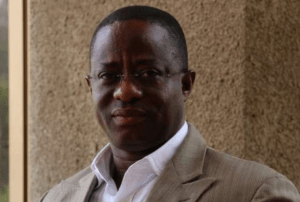Government proposes to tackle illegal mining through collaboration

Government would tackle illegal mining activities (galamsey) through collaboration, law enforcement and technological approach, Mr John Peter Amewu, Minister for Lands and Natural Resources has announced.
He said these interventions would first have to identify the challenges and the available opportunities in the mining sector.
He recounted that in 2014, a number of foreigners were arrested in various swoops and deported.
He said the commitment to sustain these swoops to preserve and protect the environment had been lacking because it was not sustainable.
“This is why the Ministry has come up with a concept of Multilateral Mining Integration Project (MMIP),” Mr Amewu stated on Wednesday in Accra during the Stakeholders Workshop on ‘How to Control Illegal Mining Activities in Ghana.’
“This Project will be planned and implemented between three to five years. A holistic approach to combat illegal mining relies on more than just militants and combat actions in mining communities; MMIP combines Legislations Enforcement Civil Integration and Technical Approach (LECITA) as a sustainable and structured but regimental conjoint concept which will encompass multi stakeholders,” the Minister stated.
Mr Amewu said the mining sector in Ghana was categorised into large and small scale; adding that the Small Scale Mining (SSM) sector was reserved for Ghanaians, while the Large Scale Mining (LSM) sector was opened for foreign participation.
“It is estimated that 25,000 and over 1.5 million people are engaged in the large scale and the small scale mining sectors respectively,” he said.
“One can only see that the SSM sector provides more jobs to people than the large scale mining sector.
“However, the LSM sector is more organised and, therefore, environmentally friendly than the small scale mining especially illegal mining,” he said.
Mr Amewu said illegal SSM was seen carried out in forest reserves, water bodies, cocoa farms and LSM concessions and even around sensitive infrastructures like schools and railway lines.
He explained that Galamsey activities have had and continue to have negative impacts on the environment and socio-economic development of the entire country in recent years.
Mr Amewu said the menace of illegal mining had assumed a dimension that posed a threat to national security and therefore, required a multi-stakeholder engagement to identify the various challenges and available opportunities for overcoming them.
He said various interventions initiated by successive governments to address the galamsey menace had been hampered by various challenges such as the lack of political will, inability to enforce laws and ownership of lands versus ownership of minerals.
Others were the spectrum of people involved, diplomatic relations with affected foreign nationals’ countries and necessary support from some state institutions and every citizen.
He said the government had the political will to enforce the appropriate measures to control illegal mining in the country.
Dr Toni Aubynn, the Chief Executive Officer of the Minerals Commission, said it was high time government found a lasting solution to the issue of illegal mining in the country.
Mr Jacob Osei Yeboah, a mining consultant and an Independent Presidential Candidate in the 2016 general election, called for a second look at the issue of SSM; adding that there was the need to develop a system to reclaim all degraded mining areas.
Nana Ehunabobrim Prah Agyensaim VI, Paramount Chief of the Assin Owirenkyi Traditional Area, who chaired the event, explained that illegal mining was an illegality and should not be confused with galamsey activties.
Mr Jiang Zhouteng, the Counsellor of the Chinese Embassy in Ghana and Mr Andrew Barns, the Australian High Commissioner to Ghana were among the dignitaries who attended the workshop.
Source: GNA
